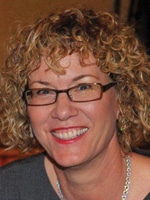Valerie Neff Newitt
December 2018—Quality in histology is at the heart of successful whole slide imaging, and a new program that rolls out in January will provide laboratories the aid they may need as they bring whole slide imaging on board.
The CAP/NSH Whole Slide Image Quality Improvement Program is intended for laboratories that have the ability to perform whole slide image scans and want those scans to be assessed externally. Enrollment is underway now.

Dr. Trejo Bittar
“If you have a bad H&E-stained slide, you will get an even worse digital slide. You need good H&E preparation and techniques to get
a good scanned slide. Not everyone understands that adequately,” says Humberto Trejo Bittar, MD, assistant professor of pathology, Division of Anatomic Pathology, University of Pittsburgh Medical Center Presbyterian Hospital.
Some laboratories may think they can stick with old specimen and slide preparation practices and habits, he says. “They do not think they need to incorporate anything new. Well, think again,” advises Dr. Trejo Bittar, a member of the CAP/NSH Histotechnology Committee.
“There are several characteristics that an H&E slide must have to be a good scanned slide,” he says. The new program, a collaboration of the CAP/NSH Histotechnology and CAP Digital Pathology committees, “will help labs understand that.”
The Whole Slide Image Quality Improvement Program will begin with two mailings to participants, six months apart. The “A” mailing will be distributed Jan. 22. Laboratories will be instructed to stain with H&E tissue from a breast resection, lung resection, breast needle core biopsy, and prostate needle core biopsy. “For each, they will create a slide, stain with H&E, and make a scan. Then they will upload their scan to a wonderful tool called DigitalScope,” says Histotechnology Committee member Robert Lott, BS, HTL(ASCP), external quality assessment manager, Roche Tissue Diagnostics. DigitalScope is the CAP platform that allows the user to pull up a digital image, focus up and down on it, and move it five, 10, 20, or 40×, “just like on a microscope,” Lott says, adding, “All details can be seen.”
Labs will be instructed in how to package their glass slides and send them to the CAP.
In July participants will receive the “B” mailing with instructions for tissue from a colon resection, kidney resection, colon biopsy, and skin punch biopsy.
Group A scans will be graded in April 2019, group B scans in September. Pathologists and histotechnologists who have been approved to grade will perform the assessments using a numeric scale. “They will be pathologists from the CAP Digital Pathology Committee as well as individuals experienced in digital pathology from the CAP’s Histotechnology Committee,” says Elizabeth A. Chlipala, BS, HTL(ASCP)QIHC, manager of Premier Laboratory, LLC, Longmont, Colo., and a member of the Histotechnology Committee. All graders will undergo an extensive orientation. “They will learn the different scoring criteria so that everyone is on the same page with respect to how they score the scans,” Chlipala says.

Chilpala
 CAP TODAY Pathology/Laboratory Medicine/Laboratory Management
CAP TODAY Pathology/Laboratory Medicine/Laboratory Management
